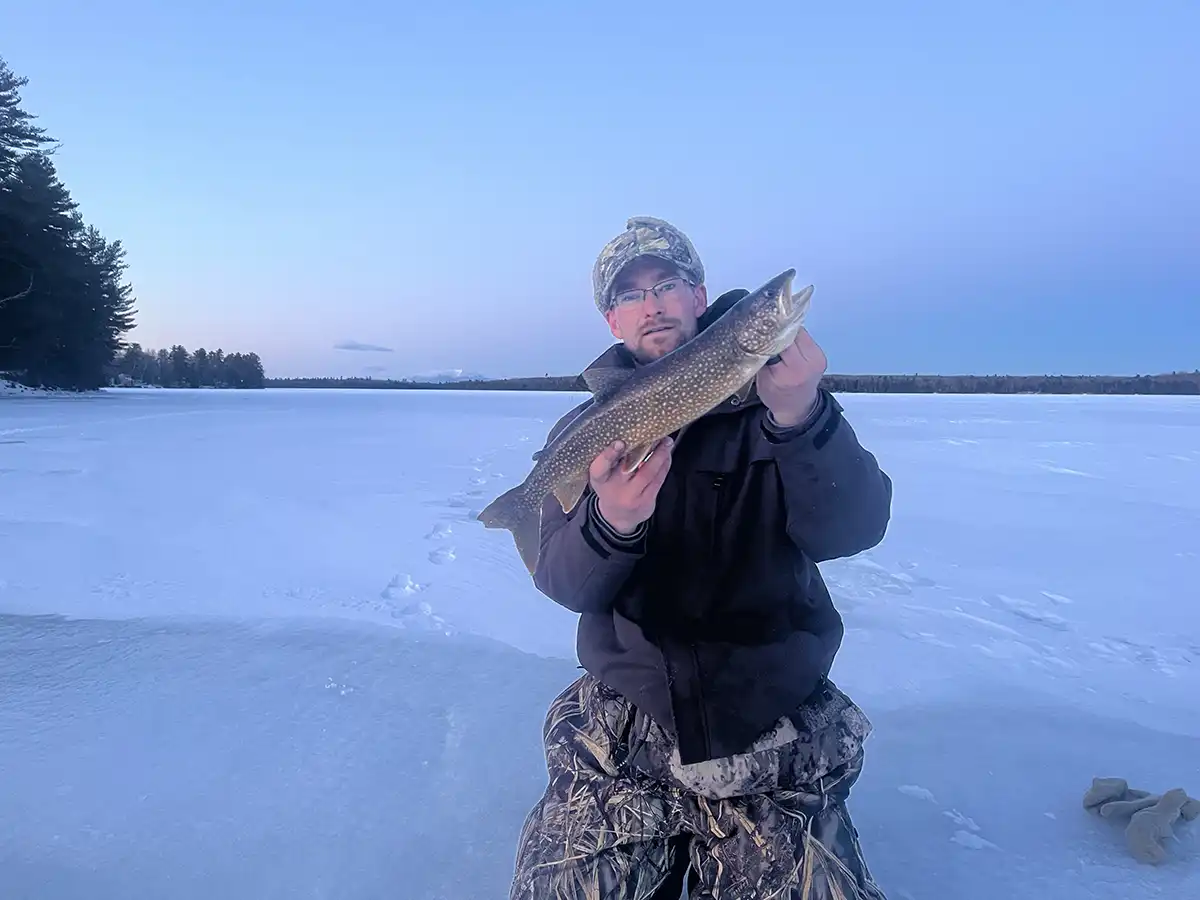In the early days of their ice angling pursuits, the individual showcased a dedicated approach to tip-up fishing. Armed with sizable shiners, they would meticulously set up an array of lines upon reaching the lake. The angler’s strategy underwent a significant transformation with the introduction of a Vexilar unit.
The individual’s ice-fishing expertise took its final shape under the guidance of a local mentor, who emphasized the delicate balance between the thrill of flags and the precision of electronic tools. While the love for ice fishing persisted, residing in South Carolina limited the angler to an annual week on the ice. During a recent trip to Maine, facing challenging ice conditions and inexperienced anglers, they relied on tip-ups for a successful outing.

Understanding Tip-Ups: A tip-up, as explained, is a set-line device strategically positioned over an ice hole, featuring a reel that extends below. When a fish takes the bait, the reel movement triggers a flag, alerting the angler. Tip-up designs vary by region, with common styles such as cross-member setups in the Northeast and plank-style tip-ups like the Beaver Dam Original Rail Tip-Up prevalent in the Midwest.
Optimal Tip-Up Locations for Lake Trout: During winter, lake trout typically search for schools of baitfish, often supported by smelt in Maine. They can be located in shallow to deep waters, making areas like humps, drop-offs, and points particularly productive. A recommended approach involves spreading tip-ups across the entire area, covering both shallow and deep zones. Attention to sonar markings aids in setting tip-ups at various depths for enhanced chances of success.
Setting Up a Tip-Up: Regardless of style, the angler should clear the ice hole of slush and set the bait at the appropriate depth. Efficient depth setting can be achieved using a sonar unit or a sounder/depth finder. The rig includes a barrel swivel and a ten to fifteen-pound Berkley Vanish Leader Material down to a Gamakatsu Octopus Hook. Enhancements such as a Colorado Spinner Blade or a “turbo rig” for larger baits can elevate the presentation.

Tip-Up Protocol: Caution is advised when checking flags to avoid false alarms, especially in windy conditions. Approaching silently prevents scaring off potential fish. Confirmation of a live line involves ensuring the spool is actively spinning. The angler then sets up an emergency line stockpile. Setting the hook is recommended only when the fish is actively moving away. Hand-over-hand pulling necessitates careful line management.
Maintaining Tip-Ups: Regular checks and cleaning of lines are crucial to prevent ice build-up. Flurries of flags often follow maintenance, potentially triggering additional strikes. Despite technological advancements, tip-ups retain their value for generating action and securing extra catches during ice fishing excursions.
Now that you know more about using tip-ups, you’ll be catching lake trout like a professional.
Images/Source: Wired2Fish





